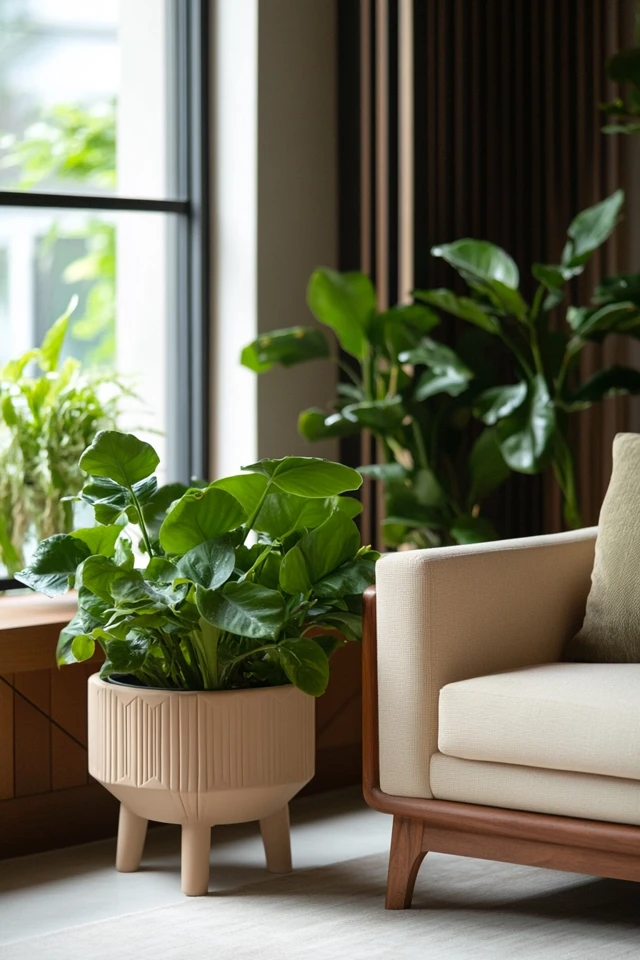Indoor greenery is a natural complement to mid-century modern design. The clean lines, warm wood tones, and retro vibes of mid-century spaces pair beautifully with the lush textures of plants. But let’s not forget the planters—they’re just as important as the plants themselves! Mid-century modern planters often feature sleek materials, sculptural shapes, and elevated designs that turn your greenery into a design statement.
I still remember the first time I incorporated a mid-century planter into my home. It was a classic white ceramic planter with a walnut wood stand, and it instantly elevated the room. My fiddle-leaf fig never looked so chic! It was a small detail, but it tied the space together in a way I hadn’t expected.
In this guide, I’ll share the best mid-century modern planters to complement your indoor greenery, as well as tips on how to style them for maximum impact.
What Makes a Planter Mid-Century Modern?
Mid-century modern planters are defined by their:
- Clean Lines: Minimalist, geometric shapes like cylinders, cones, and spheres.
- Natural Materials: Ceramic, wood, and metal are common, often paired with natural finishes.
- Elevated Designs: Planters with stands, especially those featuring wood or metal, are a hallmark of the style.
- Neutral or Earthy Colors: White, black, terracotta, and muted tones dominate, but pops of color like mustard yellow or olive green are also common.
1. Ceramic Planters With Wooden Stands
Why They’re Great:
- The combination of glossy ceramic and warm wood captures the essence of mid-century design.
- Raised stands add height and dimension, making your plants a focal point.
Best Plants to Pair With Them:
- Fiddle-leaf figs, snake plants, or monstera deliciosa for dramatic height and texture.
Where to Use Them:
- In living rooms near sofas or credenzas.
- As statement pieces in entryways or corners.
Pro Tip: Choose stands with tapered legs for an authentic mid-century touch.
2. Bullet Planters
Why They’re Great:
- These iconic planters are instantly recognizable for their retro silhouette and tripod stands.
- Available in bold colors or neutral tones, they’re perfect for adding a pop of personality.
Best Plants to Pair With Them:
- Cascading plants like pothos or ferns to contrast with the planter’s sleek shape.
Where to Use Them:
- Near mid-century armchairs or sofas to create a cohesive look.
- On patios or balconies as stylish outdoor accents.
Pro Tip: Opt for a matte finish to keep the look sophisticated.
3. Geometric Ceramic Planters
Why They’re Great:
- These planters feature angular or faceted designs that add texture and interest to minimalist spaces.
- Their simple yet striking shapes align perfectly with mid-century modern aesthetics.
Best Plants to Pair With Them:
- Succulents, cacti, or smaller plants that don’t overwhelm the planter’s design.
Where to Use Them:
- On coffee tables, shelves, or desks as accent pieces.
- Grouped together in varying sizes for a curated display.
Pro Tip: Mix glossy and matte finishes for a layered, dynamic look.
4. Metal Planters With Sleek Finishes
Why They’re Great:
- Brass, black, or matte white metal planters bring a touch of elegance and modernity to your space.
- Their reflective surfaces or industrial edge provide contrast against softer elements like greenery and wood.
Best Plants to Pair With Them:
- Tall plants like rubber trees or yucca for a dramatic statement.
Where to Use Them:
- Flanking fireplaces or as stand-alone features in minimalist rooms.
- In groups of three for a chic, symmetrical arrangement.
Pro Tip: Use metal planters to add a hint of glam to an otherwise understated space.
5. Terracotta Planters With a Modern Twist
Why They’re Great:
- Terracotta adds warmth and an earthy element to mid-century modern interiors.
- Updated designs with sleek shapes or added stands make them feel fresh and modern.
Best Plants to Pair With Them:
- Drought-tolerant plants like succulents, aloe, or cacti.
Where to Use Them:
- On window sills, open shelving, or sideboards.
- Outdoors on patios or balconies for a cohesive indoor-outdoor vibe.
Pro Tip: Pair terracotta with neutral tones and wood to create a calming, natural look.
6. Hanging Planters
Why They’re Great:
- They’re a perfect solution for small spaces or adding greenery without taking up floor space.
- Macramé hangers or metal chains add retro flair to any room.
Best Plants to Pair With Them:
- Trailing plants like string of pearls, ivy, or spider plants.
Where to Use Them:
- In corners or near windows to take advantage of natural light.
- Over dining tables or kitchen islands for a unique statement.
Pro Tip: Mix hanging planters of different heights for a layered, boho-inspired look.
7. Stacked Planters
Why They’re Great:
- Stacked designs allow you to showcase multiple plants in one vertical arrangement.
- Perfect for creating a retro-inspired “plant tower.”
Best Plants to Pair With Them:
- Mix of small ferns, succulents, and flowering plants for variety.
Where to Use Them:
- As a room divider in open-concept spaces.
- In sunny corners where plants can thrive.
Pro Tip: Choose stacked planters with wood or metal frames to match your mid-century furniture.
8. Low, Wide Planters
Why They’re Great:
- These planters create a grounded, minimalist look.
- Ideal for showcasing shorter plants or creating centerpieces.
Best Plants to Pair With Them:
- Bonsai trees, succulents, or moss gardens.
Where to Use Them:
- On dining tables, coffee tables, or consoles as decorative focal points.
Pro Tip: Use planters with smooth finishes and neutral colors to keep the look cohesive.
9. Planters With Hairpin Stands
Why They’re Great:
- Hairpin legs are a signature element of mid-century design, adding height and elegance to planters.
- They create a floating effect, making your plants look lighter and more prominent.
Best Plants to Pair With Them:
- Medium-sized plants like peace lilies, rubber plants, or ZZ plants.
Where to Use Them:
- Next to sofas or accent chairs for added dimension.
- In entryways to create a welcoming vibe.
Pro Tip: Stick to monochromatic planter colors for a timeless look.
10. Colorful Retro Planters
Why They’re Great:
- Mid-century modern design isn’t afraid of color—planters in mustard yellow, teal, or olive green can add a playful pop.
- Perfect for creating a focal point in neutral spaces.
Best Plants to Pair With Them:
- Green plants with large leaves, like bird of paradise or philodendron, to contrast the vibrant hues.
Where to Use Them:
- As bold accent pieces on side tables, shelves, or floors.
- In kids’ rooms or offices for a touch of retro fun.
Pro Tip: Balance colorful planters with neutral furniture to keep the space from feeling too busy.
Picture Gallery
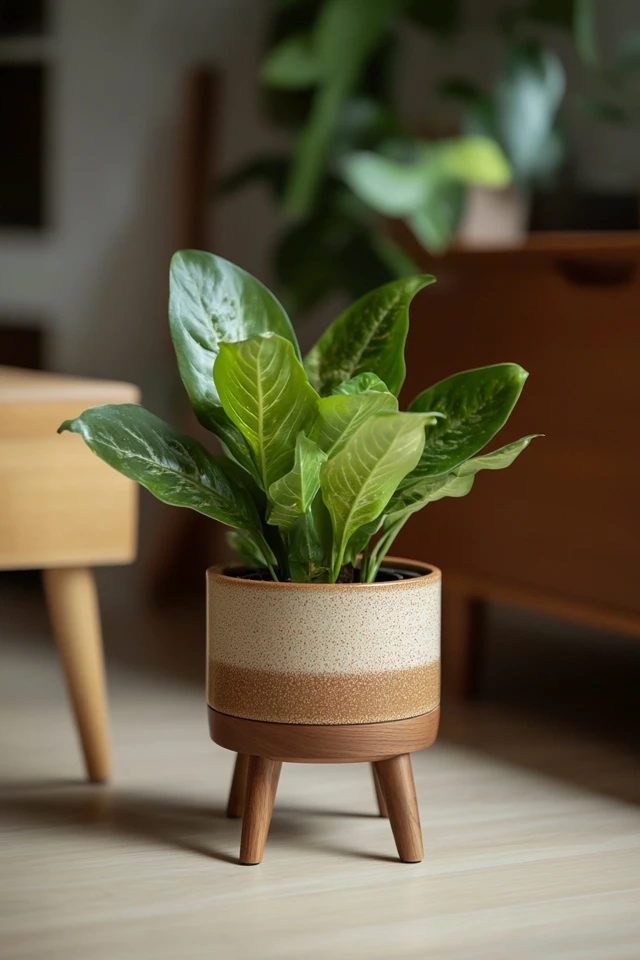
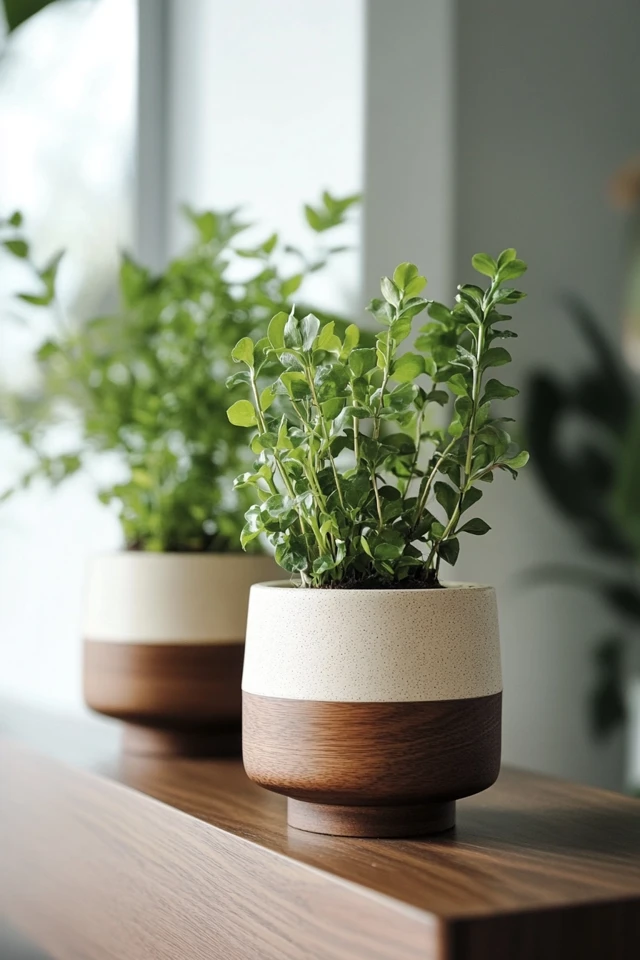
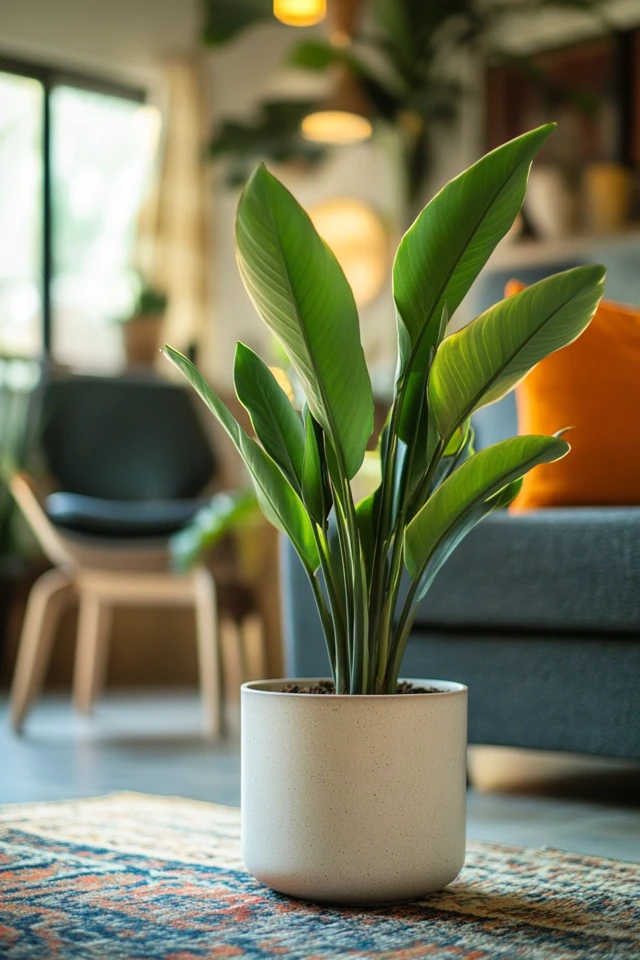
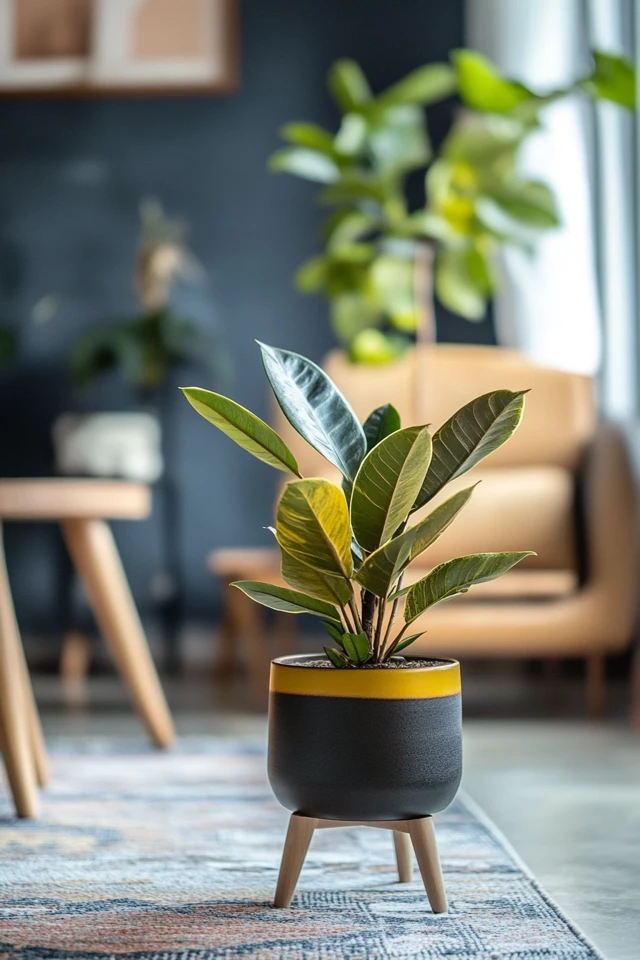
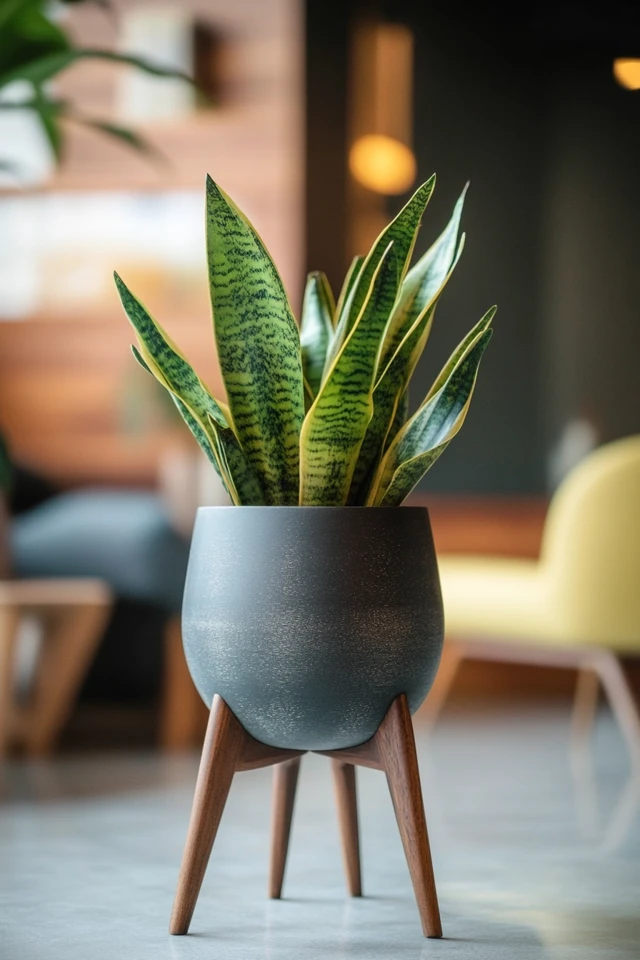

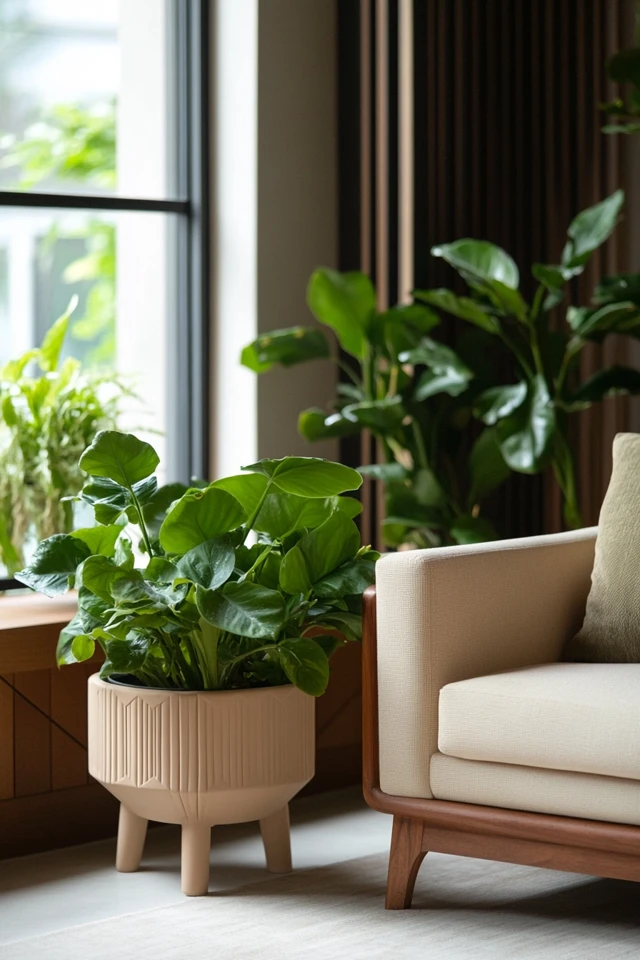
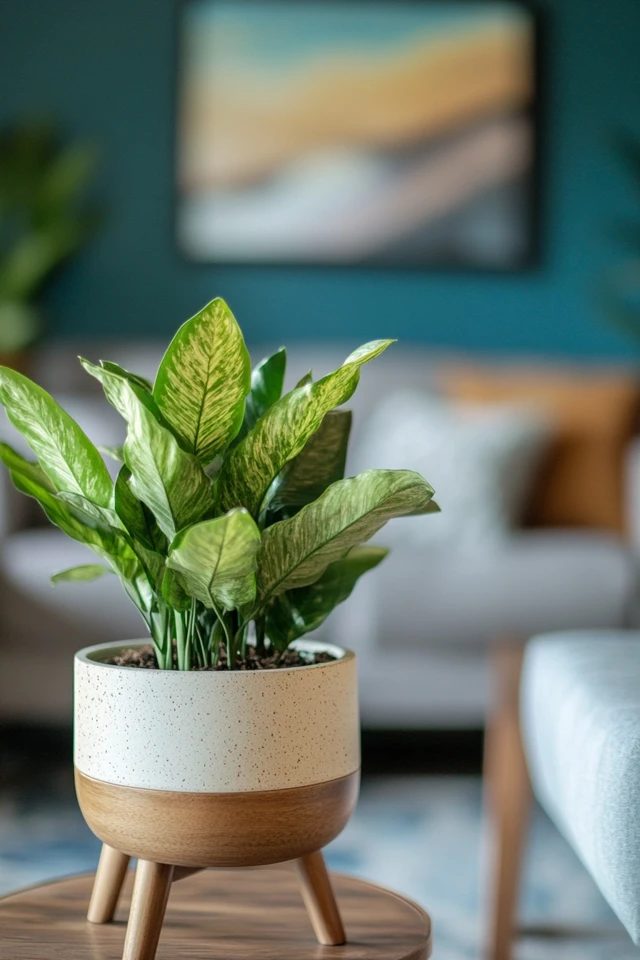
Conclusion
Mid-century modern planters are more than just vessels for your indoor greenery—they’re design elements that elevate your home’s style. Whether you prefer the timeless look of ceramic planters with wood stands or the bold statement of bullet planters, there’s a mid-century planter to suit every aesthetic and plant collection.
By combining lush greenery with these stylish planters, you’ll create a space that feels vibrant, cozy, and unmistakably mid-century modern.
FAQs
1. What type of plants work best with mid-century modern planters?
Fiddle-leaf figs, snake plants, monstera deliciosa, rubber plants, and succulents are all great choices.
2. How do I choose the right size planter for my plant?
The planter should be slightly larger than the plant’s current pot to allow room for growth. Avoid oversized planters, which can lead to overwatering.
3. Can I use mid-century modern planters outdoors?
Yes! Look for weather-resistant materials like terracotta, fiberglass, or metal for outdoor use.
4. How do I style multiple planters in one space?
Vary the heights, shapes, and materials of the planters for a dynamic look. Group them in odd numbers for visual balance.
5. Where can I buy mid-century modern planters?
Check out retailers like West Elm, CB2, Article, or local vintage stores for authentic mid-century designs or modern replicas.

